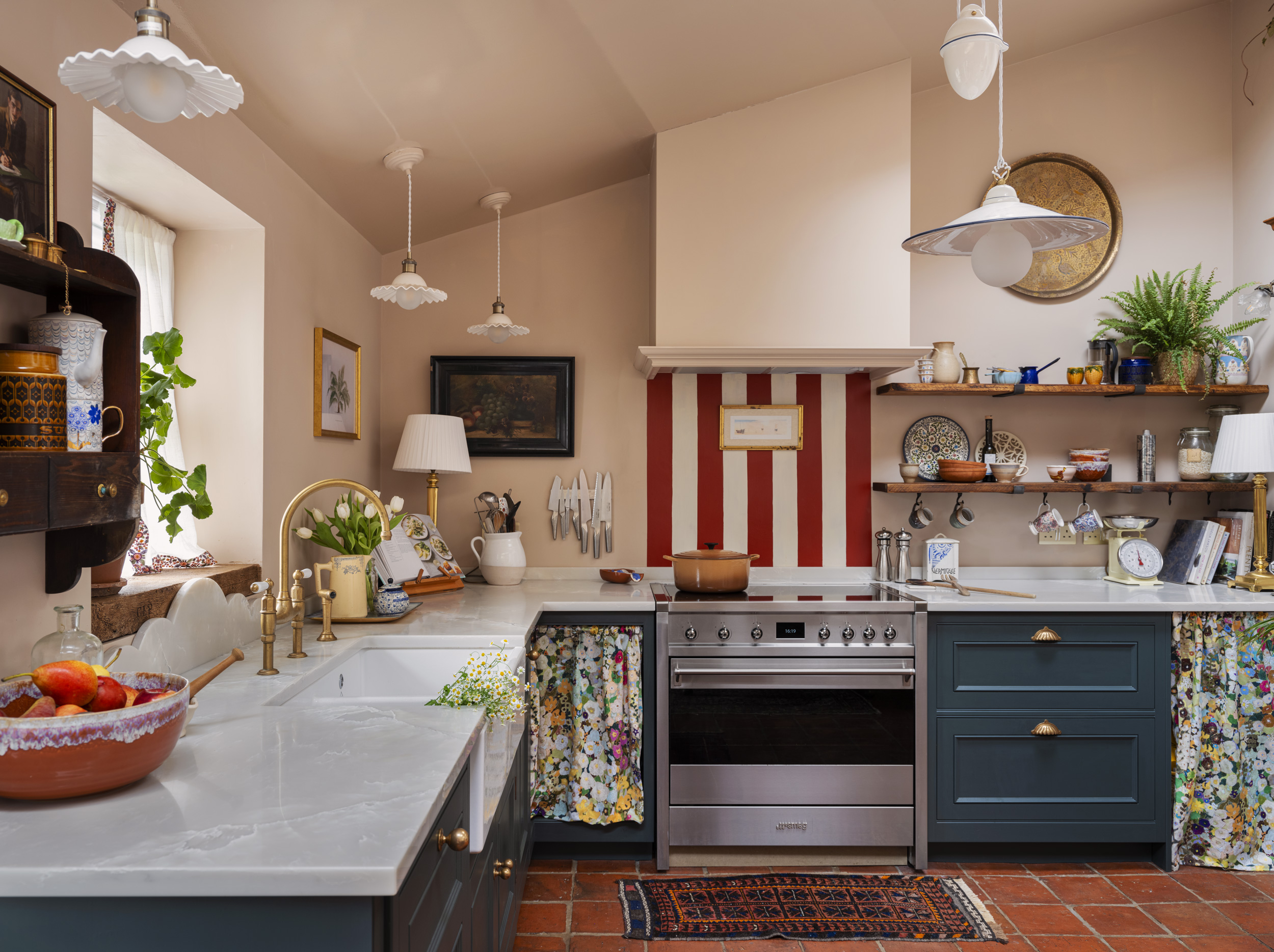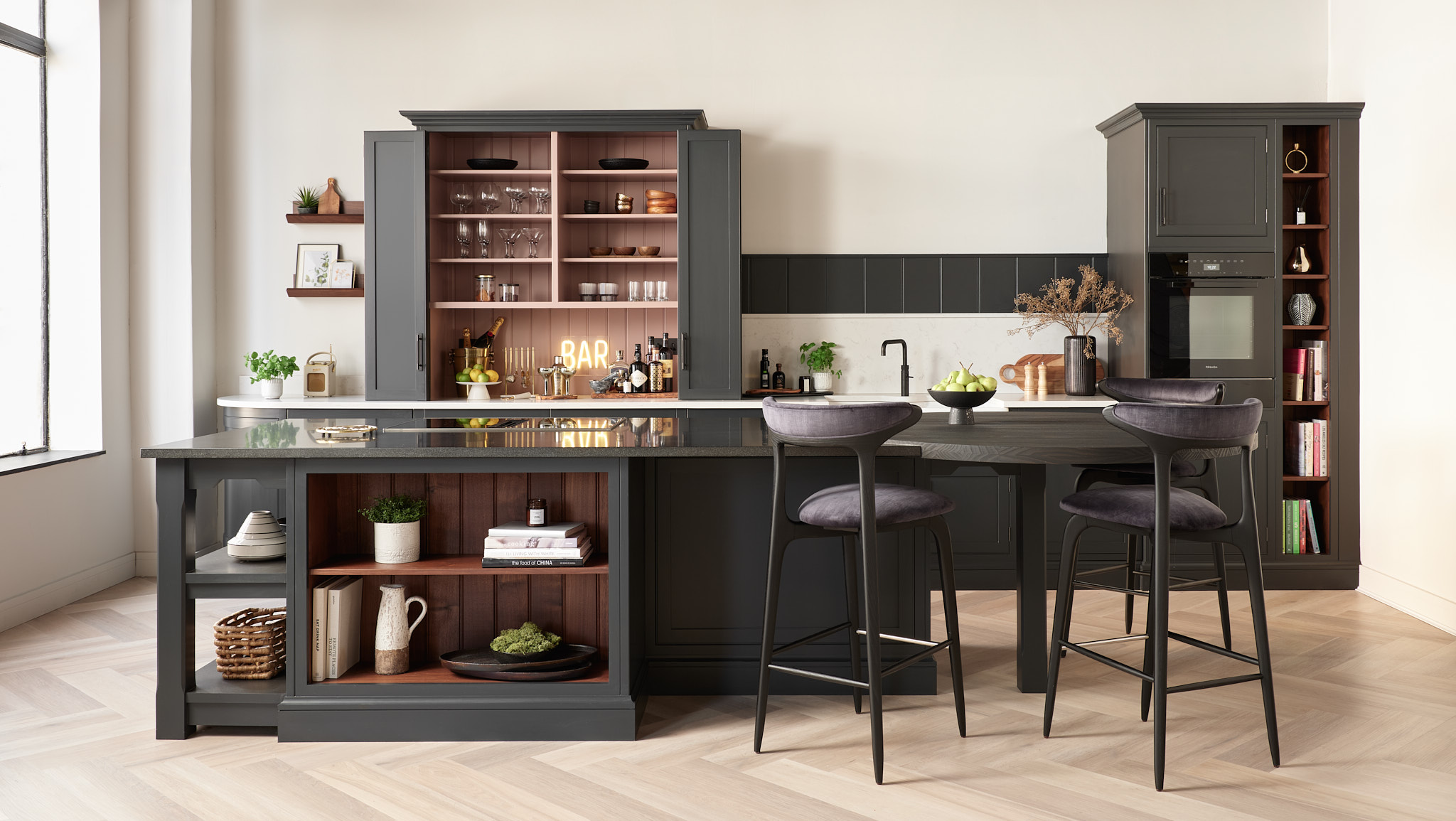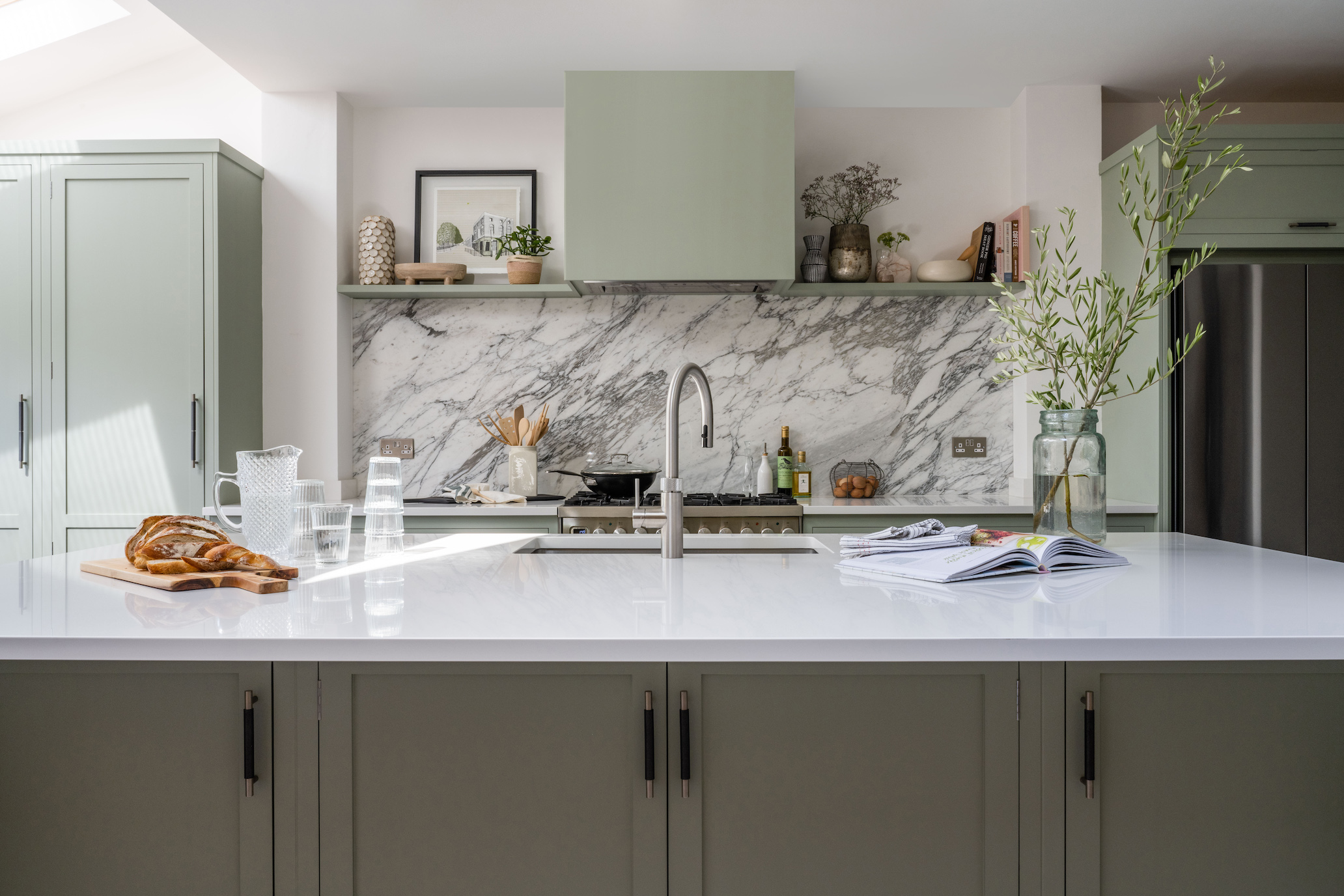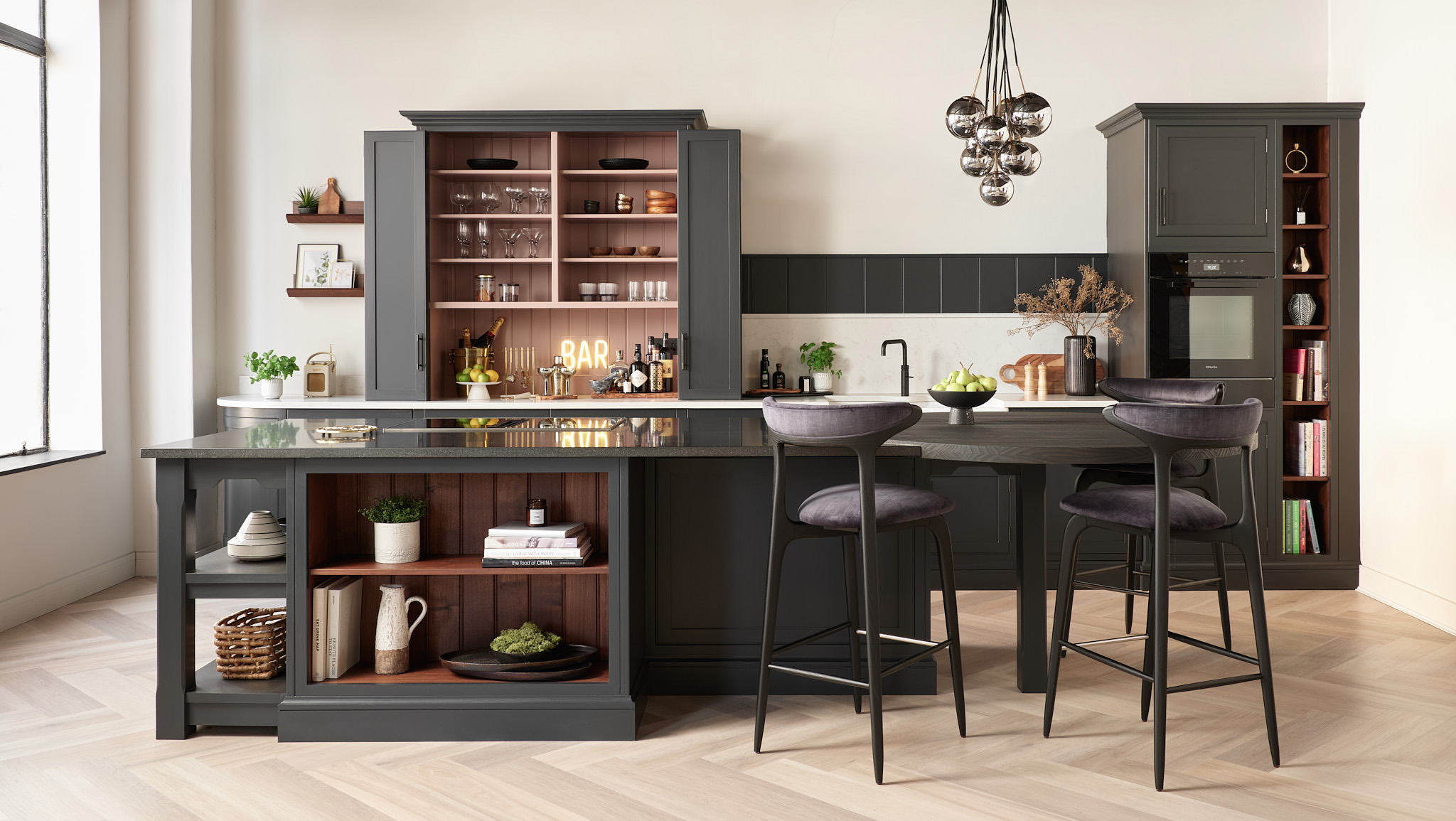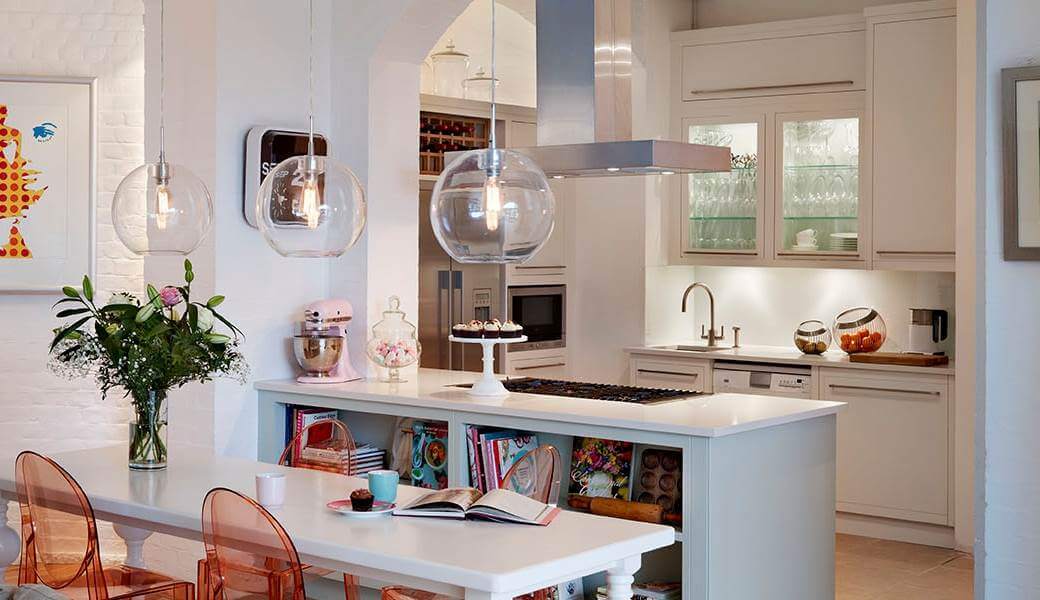
Quieter and also much more energy efficient than ever, the latest extractors are also better looking, too. There are several different types and the model you opt for will depend both on the size and configuration of your room, as well as personal taste.
Macro alias: InlineMedia
PICK YOUR TYPE
First, you’ll need to decide which kind of extractor you’ll need – an extraction or recirculation model. Extraction models are more efficient and remove steam from the kitchen to the outside so need ducting through an outside wall. Recirculating models suck air through charcoal filters before releasing the cleaned air back into the room.
Macro alias: InlineMedia
WHAT’S YOUR DESIGN?
The simplest and most discrete of designs are either canopy hoods that sit underneath wall units above the cooktop, or one of the latest extracting innovations, the overhead ceiling design. This is placed flush into the ceiling and works particularly well in open plan spaces where a clear sightline – to a children’s play area or into the garden for instance – is important.
A chimney extractor fits flush or at a slight angle to the wall above the cooking area and there are many different looks, incorporating stainless steel and glass as well as decorative ones from companies such as Elica and Faber. If you have an island or peninsula that includes a cooking element and where you want extraction to be a feature, then opt for a pendant or chimney design that ducts down from the ceiling.
If you have problems with ducting into the ceiling then downdraft models, which sit in the worktop and rise up from behind or to one side are an attractive solution. A more recent development from companies such as Bora and Caple is an extraction unit that is an integral part of the hob and sucks air down into a recirculating unit below.
Macro alias: InlineMedia
MUST-HAVE FEATURES
Look out for sensors that automatically stop and start the extractor when needed, replaceable filters, built-in LED lighting, touch controls and a low decibel rating. The latter is particularly important for open plan spaces, as you don’t want the sound of your extractor drowning out after-dinner conversation. Also, talk to your designer about extraction rates to ensure your chosen hood is actually powerful enough for your space. It should be able to replace the air around 10-20 times per hour, shown as a rate of m3/hr. A quick calculation for working out the hood capacity you need is 10 times the volume of your kitchen (volume = width x height x depth). So, if your kitchen is 4 x 4 metres by 2.5 metres high, the hood should be able to replace approximately 400-800/m3 of air per hour.
Macro alias: InlineMedia
Ready to refresh your kitchen? Request a free copy of our brochure here, or book a design consultation here to discuss plans in your local store.
Browse our Pinterest and Instagram pages for more extractor fans in-situ.


